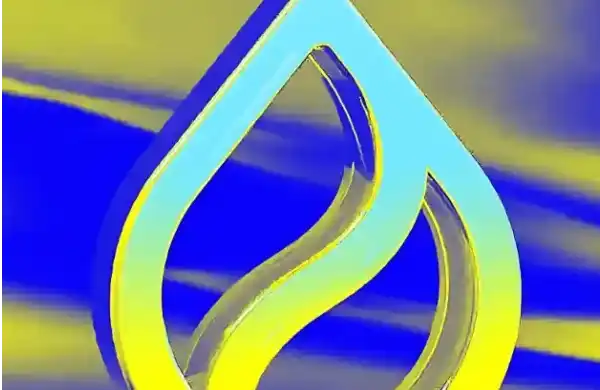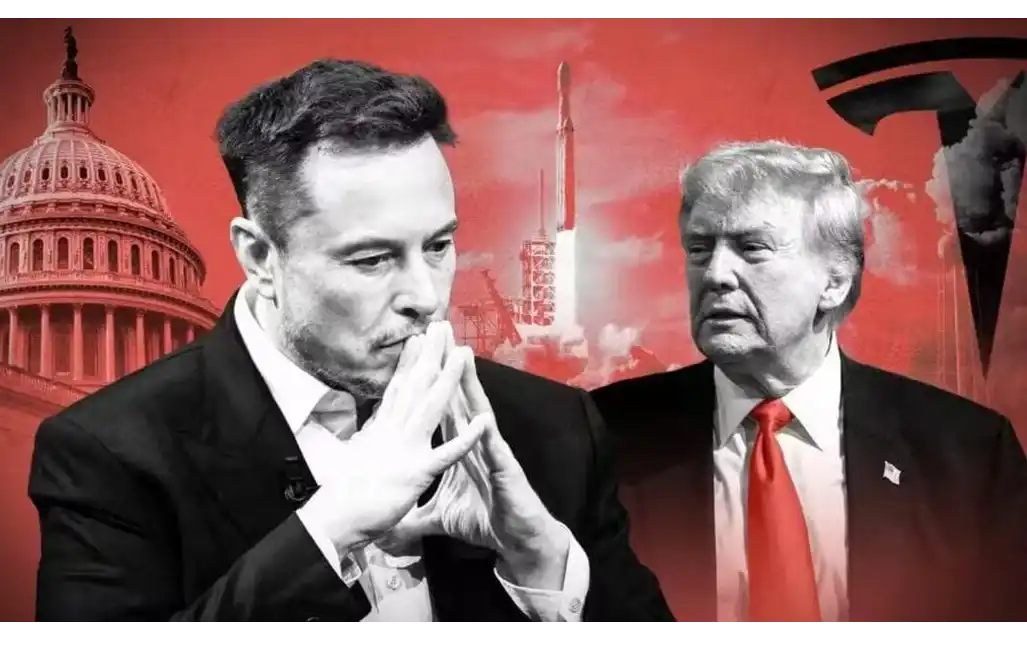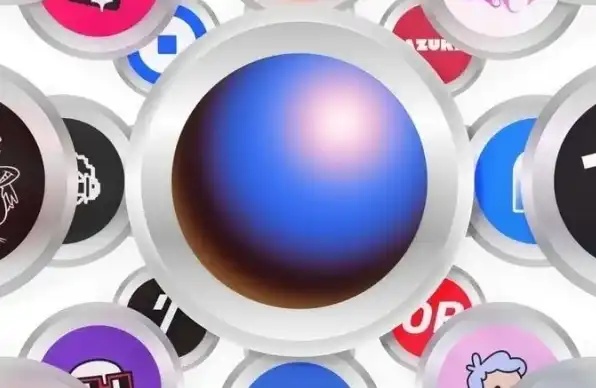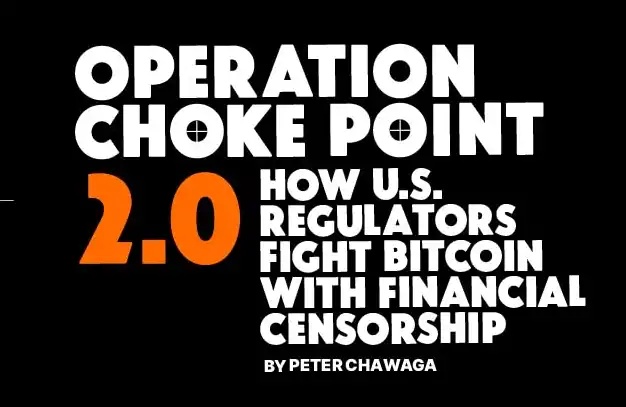Binance Research: An Overview of the RWA Ecosystem.
Original author: Binance Research
Translated by: Jinse Finance
1、 要点
translates to
1. Key Points
in English.
The tokenization of real-world assets (RWAs) continues to gain traction as user adoption rates increase and large institutions enter the space.
Combined with the relatively low yields of decentralized finance (DeFi), the continuously rising interest rates have prompted people's interest in tokenized government bonds.
Currently, investors have allocated over 600 million US dollars to tokenized government bonds and are receiving an annualized yield of approximately 4.2%.
It is expected that by 2030, the market size of tokenized assets will reach 16 trillion US dollars, with significant growth potential, far exceeding the 310 billion US dollars in 2022.
Many protocols have integrated RWAs or participated in their growth. This article briefly introduces MakerDAO, Maple Finance, and Ondo Finance, among others.
2、Overview
It has been over four months since Binance first released its report on real-world assets. What changes have occurred in the market landscape since then and what are the latest developments? This report will explore all of these topics.
2.1 Introduction to Real-World Assets
Before delving into charts and the latest market data, we summarize several key points about Real World Assets (RWAs) in this section. This covers the basic concept of RWAs and serves as a quick introduction to the field.
What is real-world assets?
As the name suggests, Real World Assets (RWAs) represent tangible and intangible assets in the real world, such as real estate, bonds, commodities, etc. Tokenization of RWAs allows us to bring these off-chain assets onto the blockchain, opening up new possibilities in terms of composability and potential use cases.
Figure 1: Examples of real-world assets

By tokenizing RWAs, market participants can enjoy higher efficiency, greater transparency, and reduced human error, as these assets can be stored and tracked on the chain.
How does the tokenization process work?
To put RWAs on the chain, their ownership and representation must be recorded on the blockchain. Although the specific mechanisms may vary, the typical process involves tokenizing the asset by minting it on the chain after the transaction terms have been established.
Figure 2: Example of on-chain tokenization process

2.2 RWA Ecosystem
The RWA ecosystem is diverse and steadily expanding as more projects enter the market. Some projects provide support in areas such as regulation, technology, and operations, allowing real-world assets to enter the crypto field. We broadly refer to these projects as "RWA infrastructure." In addition, there are "asset providers" who focus on proposing and creating various types of RWA asset classes, including real estate, fixed income, and stocks.
Figure 3: RWA Ecosystem Map

Blockchain: A permissioned and permissionless blockchain specifically designed for RWAs.
Securitization/Tokenization: Bringing RWAs onto the blockchain.
Compliance: Ensuring compliance services for investors and issuers.
Real Estate: Propose and create RWAs supported by real estate.
Climate Products: Propose and create RWAs that support climate assets.
Private Credit: Propose and create RWAs supported by private fixed income.
Public Credit/Stocks: Propose and create RWAs supported by public fixed income and stocks.
New Emerging Markets: Propose and create RWAs from emerging markets.
Trade financing: Propose and create RWAs supported by trade financing.






4、What are the RWA protocols?
In order to demonstrate how some protocols integrate RWAs, this section focuses on some market participants. In addition to the following protocols, our previous reports covered Centrifuge and Goldfinch, among others.
Attention: Mentioning specific projects does not constitute endorsement or recommendation of those projects. The mentioned projects are only used to illustrate the adoption of RWAs. Additional due diligence should be conducted to better understand these projects and related risks.
Maple Finance
Maple Finance is an institutional capital network that provides infrastructure for on-chain lending business to credit experts and connects institutional borrowers and lenders. Maple Finance has three main stakeholders: borrowers, lenders, and fund pool representatives.
- Institutional borrowers can obtain financing options on Maple Finance.- Lenders can earn profits by lending assets to borrowers.- The fund pool representative is a credit professional who evaluates, manages, and underwrites loans.
Although Maple Protocol previously focused on unsecured cryptocurrency loans, it has recently become increasingly involved in RWA-based loans. Previously, unsecured cryptocurrency loans left Maple with over $50 million in bad debt. These losses stemmed from the collapse of centralized exchanges last year, which spread to Maple's native cryptocurrency borrowers.
Currently, Maple Finance is one of the market leaders in the private credit industry, with over 332 million US dollars in outstanding loans.
Figure 10: Non-performing loans of private credit companies

By taking advantage of the increased demand for US Treasury bonds, Maple launched a US Treasury bond fund in April, allowing non-US accredited investors and entities to directly access US Treasury bonds. The fund is supported by US Treasury bonds and repurchase agreements, with a target net annualized return of the current one-month US Treasury bond rate minus 1.0% annual fees and expenses. This essentially provides a cash management solution for stablecoin holders, enabling them to earn returns.
Overall, products such as RWAs offered by Maple Finance demonstrate the potential to address today's challenges while providing cryptocurrency users with another way to earn returns on their held assets.
Figure 11: Maple's cash management solution addresses some current challenges.

MakerDAO
As the protocol behind the DAI stablecoin and the third largest protocol in DeFi, MakerDAO is undoubtedly a familiar name to many in the cryptocurrency industry. Borrowers deposit collateral into MakerDAO's insurance pool and can then withdraw debt denominated in DAI.
MakerDAO's attempt to integrate RWAs can be traced back to as early as 2020, when MakerDAO voted to allow borrowers to collateralize RWA-based assets in the vault. Since then, MakerDAO's RWA vault has grown to $2.3 billion. It is worth noting that the growth of its RWA has mainly occurred in the past year, accompanied by the rise in real-world yields.
Figure 12: MakerDAO currently holds over 2.3 billion USD worth of RWA positions.

Considering that RWAs account for 49.2% of MakerDAO's total assets, it is also a contributor to the protocol's revenue on a year-over-year basis. Specifically, since the end of 2022, the share of RWAs in protocol revenue has significantly increased, currently accounting for 50.8% of protocol revenue.
Figure 13: The contribution of RWAs to MakerDAO's revenue has significantly increased in the past year.

Figure 14: RWAs account for more than half of MakerDAO's annual revenue.

RWAs, especially US Treasuries, may continue to play an important role in MakerDAO's balance sheet in the foreseeable future. Recently, MakerDAO purchased $7 billion worth of US Treasuries in June, increasing its holdings to $12 billion. Having a diversified collateral base, including the risk of RWAs, allows MakerDAO to take advantage of the current yield environment and mitigate risks.
Ondo Finance
Ondo Finance provides institutional-grade investment products and services on the blockchain. The company is led by former Goldman Sachs employee Nathan Allman and has received support from notable investors such as Peter Thiel's Founders Fund, Coinbase Ventures, and Tiger Global.
Ondo offers four RWA products, providing investors with a range of access to cash management products and bond funds. During the process, investors can deposit USDC, exchange it for USD, and purchase assets such as ETFs or funds. In return, the new liquidity provider will receive a custody certificate that can be further used in other protocols.
Figure 15: Products of Ondo Finance

Ondo Finance is currently one of the market leaders in the tokenized US Treasury bond field, second only to traditional financial asset management company Franklin Templeton.
Figure 16: Ondo Finance holds a 25.9% market share in the tokenized US Treasury market.

It is worth noting that Ondo Finance has recently expanded its business to the Polygon network as part of a "strategic alliance". It has launched its OUSG token on the Polygon network, which is a tokenization of Blackrock's iShares Short Treasury Bond ETF. This is Ondo Finance's first expansion outside of Ethereum, and we will be monitoring the impact of this move on adoption rates.
5、Value-worthy Development
In 2023, tokenization was referred to as the "killer application of traditional finance" by JPMorgan Chase and called the "future market" by Larry Fink, CEO of BlackRock.
Interestingly, we have noticed that in addition to DeFi protocols, traditional financial institutions are also showing increasing acceptance of tokenized RWAs. For example, global asset management company Franklin Templeton has launched its own fund on the public chain. In addition, some institutions have begun exploring the establishment of their own private blockchains for asset tokenization.

January 31, 2023: Intain launched its IntainMARKETS solution on Avalanche, providing a tokenized market for structured financial products.
April 26, 2023: Franklin Templeton announced that its US government money fund will be put on the Polygon blockchain. The fund, worth $272 million, mainly invests in government bonds, cash, and repurchase agreements.
May 9, 2023: Canton Network launched a consortium of financial institutions on its blockchain, including BNP Paribas, Chicago Mercantile Exchange, Goldman Sachs, and Microsoft. It will provide a decentralized infrastructure for tokenization and blockchain interoperability.
June 2, 2023: MakerDAO has approved multiple proposals to open up RWA vaults for its assets USDC and DAI to generate revenue. In April, the protocol opened up an insurance vault for Coinbase custody and approved up to 500 million USDC stablecoin for a 2.6% yield. Subsequently, on June 2, the community voted again to approve a new insurance vault in partnership with BlockTower, with a maximum investment of $1.28 billion in short-term US Treasury bonds.
June 7, 2023: Centrifuge launched its new product, Centrifuge Prime, providing technology and legal framework for DAOs to invest in RWAs. Previous partners include Aave and MakerDAO, both of which have utilized the Centrifuge platform.
June 21, 2023: The Monetary Authority of Singapore (MAS) and the Bank for International Settlements (BIS) have collaborated to propose a framework for designing tokenized digital assets open and interoperable networks. The tokenization experiment, known as "Project Guardian," has been conducted in wealth management, fixed income, and foreign exchange, with participating banks including Standard Chartered Bank, HSBC, DBS Bank, and Citibank.
June 23, 2023: Japan's largest bank, Mitsubishi UFJ, is in discussions with institutions to use its blockchain platform, Progmat, to issue stablecoins pegged to foreign currencies, including the US dollar, for global use. The bank also plans to use the platform to issue tokenized securities for third parties.
June 28, 2023: The founder of Compound has applied to launch "Superstate", a project that will create a short-term government bond fund on the Ethereum blockchain. It will invest in "ultra-short-term government bonds", including US Treasury bonds and government agency bonds.
June 29, 2023: Maple Finance's new lending department, Maple Direct, operated by the encryption industry, will issue over-collateralized loans to Web3 businesses. These loans will be secured by BTC, ETH, and collateralized ETH.
June 29, 2023: The European Central Bank outlined its direction for exploring wholesale central bank digital currencies, while also exploring other options to support DLT transactions. This will include experimenting with the central bank's legal tender from 2024 onwards.
June 29, 2023: Mastercard is testing an experimental project called "Multi-Token Network", which will first explore tokenized bank deposits. In the future, they also plan to move towards central bank digital currencies and regulated stablecoins.
July 2, 2023: Tron's first RWA product "Mortgaged USDT" (stUSDT) was officially launched on JustLend. Users who mortgage USDT on the platform will receive stUSDT. The mortgaged assets will be invested in RWAs to generate income.
July 17, 2023: The Financial Stability Committee released a work plan to explore asset tokenization projects and evaluate their vulnerabilities and policy impacts on the financial system. This move comes as the Payment and Market Infrastructure Committee explores the benefits, risks, and challenges of a tokenized financial ecosystem for central banks.
6、Conclusion
For blockchain technology, tokenizing real-world assets provides a strong use case that could bring the next wave of users into cryptocurrency. By offering greater transparency and efficiency, tokenization can be an attractive alternative to existing mechanisms. We have already seen traditional institutions exploring this technology, which could solve the inefficiency issues in current solutions.
The diffusion of tokenized RWAs is a positive development for cryptocurrency investors, as they now have more opportunities outside of the crypto ecosystem. In addition to being able to take advantage of higher government bond yields, the introduction of RWAs also brings more stable assets to DeFi and increases the diversity of collateral in the field. Looking ahead, we look forward to continued innovation and development in the RWA space, bringing more use cases and driving adoption of cryptocurrencies.
Original Link
Welcome to join the official BlockBeats community:
Telegram Subscription Group: https://t.me/theblockbeats
Telegram Discussion Group: https://t.me/BlockBeats_App
Official Twitter Account: https://twitter.com/BlockBeatsAsia
 Forum
Forum OPRR
OPRR Finance
Finance
 Specials
Specials
 On-chain Eco
On-chain Eco
 Entry
Entry
 Podcasts
Podcasts
 Data
Data


 Summarized by AI
Summarized by AI







